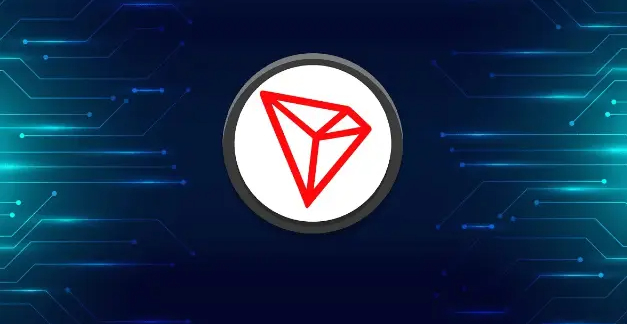-
 Bitcoin
Bitcoin $97,379.7265
3.27% -
 Ethereum
Ethereum $1,828.3307
3.15% -
 Tether USDt
Tether USDt $1.0001
0.02% -
 XRP
XRP $2.1415
1.35% -
 BNB
BNB $604.3792
1.10% -
 Solana
Solana $147.2193
2.74% -
 USDC
USDC $1.0001
0.00% -
 Dogecoin
Dogecoin $0.1730
3.54% -
 Cardano
Cardano $0.6741
3.00% -
 TRON
TRON $0.2472
1.10% -
 Sui
Sui $3.3628
3.29% -
 Chainlink
Chainlink $13.7766
2.64% -
 Avalanche
Avalanche $19.5741
-0.55% -
 Stellar
Stellar $0.2609
1.91% -
 UNUS SED LEO
UNUS SED LEO $8.6885
-0.33% -
 Shiba Inu
Shiba Inu $0.0...01283
2.30% -
 Toncoin
Toncoin $3.0271
0.62% -
 Hedera
Hedera $0.1765
2.62% -
 Bitcoin Cash
Bitcoin Cash $367.4023
3.47% -
 Hyperliquid
Hyperliquid $21.3288
5.01% -
 Litecoin
Litecoin $89.8472
8.82% -
 Polkadot
Polkadot $3.9711
1.54% -
 Dai
Dai $1.0001
0.01% -
 Monero
Monero $285.5239
-1.05% -
 Bitget Token
Bitget Token $4.3102
0.30% -
 Ethena USDe
Ethena USDe $1.0004
0.03% -
 Pi
Pi $0.5836
0.51% -
 Pepe
Pepe $0.0...08172
4.23% -
 Bittensor
Bittensor $364.0610
-0.11% -
 OKB
OKB $51.0469
0.66%
can you stake tron
Staking Tron (TRX) allows individuals to earn passive income, contribute to network security, and participate in governance by locking their TRX tokens in compatible wallets or platforms.
Nov 12, 2024 at 06:00 pm

Can You Stake Tron?
Introduction
Staking is the process of actively participating in blockchain networks to support their operations and earn rewards in return. Tron, a prominent blockchain platform, offers staking opportunities to its community members. This guide delves into the specifics of staking Tron (TRX), providing a comprehensive understanding of the process and its benefits.
What is Staking Tron (TRX)?
Staking Tron (TRX) involves locking a certain amount of TRX tokens in a compatible wallet or platform to contribute to the Tron blockchain's security and consensus. By participating in the staking process, stakers earn rewards for their contributions. These rewards are distributed in the form of additional TRX tokens, creating a passive income stream.
Benefits of Staking Tron (TRX)
Staking Tron (TRX) offers several advantages to participants, including:
- Earning TRX rewards: Stakers receive rewards in the form of TRX tokens, proportional to the amount staked and the duration of their participation.
- Supporting network security: Staked TRX tokens are used to validate transactions and maintain the integrity of the Tron blockchain.
- Governance participation: Some staking platforms empower stakers with governance rights, allowing them to participate in decision-making processes related to the blockchain's development.
- Passive income: Staking Tron (TRX) is a low-effort way to generate passive income, as rewards continue to accrue over time.
How to Stake Tron (TRX)
Staking Tron (TRX) is a straightforward process that involves the following steps:
1. Obtain Tron (TRX) Tokens:
To stake Tron (TRX), you will need to acquire TRX tokens from a cryptocurrency exchange or wallet. Several reputable platforms such as Binance, Huobi, and Coinbase offer TRX trading pairs.
2. Choose a Staking Platform:
Select a reliable staking platform that supports Tron (TRX) staking. There are numerous options available, including TronLink, Binance, and Huobi Wallet.
3. Create a Staking Wallet:
Most staking platforms require you to create a dedicated staking wallet to hold your TRX tokens. This wallet will serve as the address where your staked tokens will be deposited and rewards will be received.
4. Transfer TRX Tokens:
Transfer the TRX tokens you wish to stake from your exchange or wallet to the staking wallet address provided by your chosen platform.
5. Start Staking:
Once your TRX tokens are transferred to the staking wallet, initiate the staking process within the platform. This typically involves selecting the desired validator or pool and confirming the transaction.
6. Monitor Rewards:
After staking your TRX tokens, regularly monitor your rewards by visiting the staking platform or checking the blockchain explorer. Rewards are typically distributed periodically, and you can view your accumulated balance and unclaimed rewards.
7. Unstake TRX Tokens:
When you wish to withdraw your staked TRX tokens, you need to initiate the unstaking process. This involves submitting an unstaking request through the staking platform, which may take a specified duration to complete.
Conclusion
Staking Tron (TRX) is an accessible and rewarding way for individuals to participate in the Tron blockchain's security and consensus. By following the outlined steps and selecting a reputable staking platform, you can earn passive income, support network stability, and contribute to the Tron ecosystem's growth.
Disclaimer:info@kdj.com
The information provided is not trading advice. kdj.com does not assume any responsibility for any investments made based on the information provided in this article. Cryptocurrencies are highly volatile and it is highly recommended that you invest with caution after thorough research!
If you believe that the content used on this website infringes your copyright, please contact us immediately (info@kdj.com) and we will delete it promptly.
- Coinbase Partners With Riot Games to Become the Exclusive Cryptocurrency Exchange and Blockchain Technology Partner
- 2025-05-07 22:35:13
- Rare 'fried egg' coin that could sell for more than £170 on eBay
- 2025-05-07 22:35:13
- Movement Labs Officially Terminates Rushi Manche Amid Ongoing Controversy and Public Scrutiny
- 2025-05-07 22:30:13
- USD1, the US dollar stablecoin launched by the US President Donald Trump-backed World Liberty Financial (WLFI), has become the seventh-largest stablecoin worldwide
- 2025-05-07 22:30:13
- Jovita Idar quarter wins Best Circulating Coin or Coin Series category at the 32nd Mint Directors Conference
- 2025-05-07 22:25:13
- TRUMP Coin: The OFFICIAL TRUMP token Has Appeared, Targeting the Market by Storming the Charts
- 2025-05-07 22:25:13
Related knowledge

What is Ethereum’s Slashing mechanism and how to punish malicious behavior?
Feb 20,2025 at 03:08am
Key PointsOverview of slashingDifferent types of slashing in EthereumIncentives and consequences of slashingIdentifying and reporting slashed validatorsOngoing discussions and potential improvementsEthereum's Slashing Mechanism: Punishing Malicious BehaviorEthereum's slashing mechanism is an essential tool for ensuring network security and punishing mal...

What is the verifier node of Ethereum and how to become a verifier?
Feb 19,2025 at 06:00pm
The Verifier Node of Ethereum: A Comprehensive GuideKey Points:What is a Verifier Node?How to Become a Verifier NodeResponsibilities and Rewards of a Verifier NodeMinimum Requirements for Becoming a Verifier NodePotential Difficulties in Running a Verifier Node1. What is a Verifier Node?A Verifier Node is an independent entity on the Ethereum network th...

What is Ethereum’s staking, and how to participate and earn money?
Feb 19,2025 at 04:37pm
Key Points:Understanding Ethereum's Staking MechanismSteps to Participate in StakingBenefits and Rewards of StakingSecurity and Risk ConsiderationsTechnical Requirements and Hardware OptionsPotential Challenges and Troubleshooting TipsFAQs on Ethereum StakingWhat is Ethereum's Staking?Proof-of-Stake (PoS) is a consensus mechanism used in blockchain netw...

What is Ethereum’s DAO (Decentralized Autonomous Organization) and how does it work?
Feb 20,2025 at 03:12am
Key PointsDefinition and Structure of a DAOGovernance and Decision-Making in DAOsBenefits and Use Cases of DAOsChallenges and Limitations of DAOsWhat is Ethereum's DAO (Decentralized Autonomous Organization) and How Does It Work?Definition and Structure of a DAOA Decentralized Autonomous Organization (DAO) is an innovative governance and management fram...

What is Ethereum's multi-signature wallet and how to improve security?
Feb 20,2025 at 02:18pm
Key Points:Understanding the Concept of a Multi-Signature WalletBenefits and Drawbacks of Multisig WalletsRequirements for Setting Up a Multisig WalletStep-by-Step Guide to Generating a Multisig WalletImplementing Strategies for Enhanced Security1. Understanding the Concept of a Multi-Signature WalletA multi-signature (multisig) wallet in the Ethereum e...

What is Ethereum's oracle and how to provide data for smart contracts?
Feb 21,2025 at 01:30am
Key Points:Understanding the concept of oracles in EthereumExploring different types of oraclesDetailed guide on how to provide data for smart contractsAddressing potential challenges and considerationsWhat is Ethereum's Oracle?Oracles are crucial components in the Ethereum ecosystem, enabling smart contracts to access real-world data and off-chain even...

What is Ethereum’s Slashing mechanism and how to punish malicious behavior?
Feb 20,2025 at 03:08am
Key PointsOverview of slashingDifferent types of slashing in EthereumIncentives and consequences of slashingIdentifying and reporting slashed validatorsOngoing discussions and potential improvementsEthereum's Slashing Mechanism: Punishing Malicious BehaviorEthereum's slashing mechanism is an essential tool for ensuring network security and punishing mal...

What is the verifier node of Ethereum and how to become a verifier?
Feb 19,2025 at 06:00pm
The Verifier Node of Ethereum: A Comprehensive GuideKey Points:What is a Verifier Node?How to Become a Verifier NodeResponsibilities and Rewards of a Verifier NodeMinimum Requirements for Becoming a Verifier NodePotential Difficulties in Running a Verifier Node1. What is a Verifier Node?A Verifier Node is an independent entity on the Ethereum network th...

What is Ethereum’s staking, and how to participate and earn money?
Feb 19,2025 at 04:37pm
Key Points:Understanding Ethereum's Staking MechanismSteps to Participate in StakingBenefits and Rewards of StakingSecurity and Risk ConsiderationsTechnical Requirements and Hardware OptionsPotential Challenges and Troubleshooting TipsFAQs on Ethereum StakingWhat is Ethereum's Staking?Proof-of-Stake (PoS) is a consensus mechanism used in blockchain netw...

What is Ethereum’s DAO (Decentralized Autonomous Organization) and how does it work?
Feb 20,2025 at 03:12am
Key PointsDefinition and Structure of a DAOGovernance and Decision-Making in DAOsBenefits and Use Cases of DAOsChallenges and Limitations of DAOsWhat is Ethereum's DAO (Decentralized Autonomous Organization) and How Does It Work?Definition and Structure of a DAOA Decentralized Autonomous Organization (DAO) is an innovative governance and management fram...

What is Ethereum's multi-signature wallet and how to improve security?
Feb 20,2025 at 02:18pm
Key Points:Understanding the Concept of a Multi-Signature WalletBenefits and Drawbacks of Multisig WalletsRequirements for Setting Up a Multisig WalletStep-by-Step Guide to Generating a Multisig WalletImplementing Strategies for Enhanced Security1. Understanding the Concept of a Multi-Signature WalletA multi-signature (multisig) wallet in the Ethereum e...

What is Ethereum's oracle and how to provide data for smart contracts?
Feb 21,2025 at 01:30am
Key Points:Understanding the concept of oracles in EthereumExploring different types of oraclesDetailed guide on how to provide data for smart contractsAddressing potential challenges and considerationsWhat is Ethereum's Oracle?Oracles are crucial components in the Ethereum ecosystem, enabling smart contracts to access real-world data and off-chain even...
See all articles





















































































